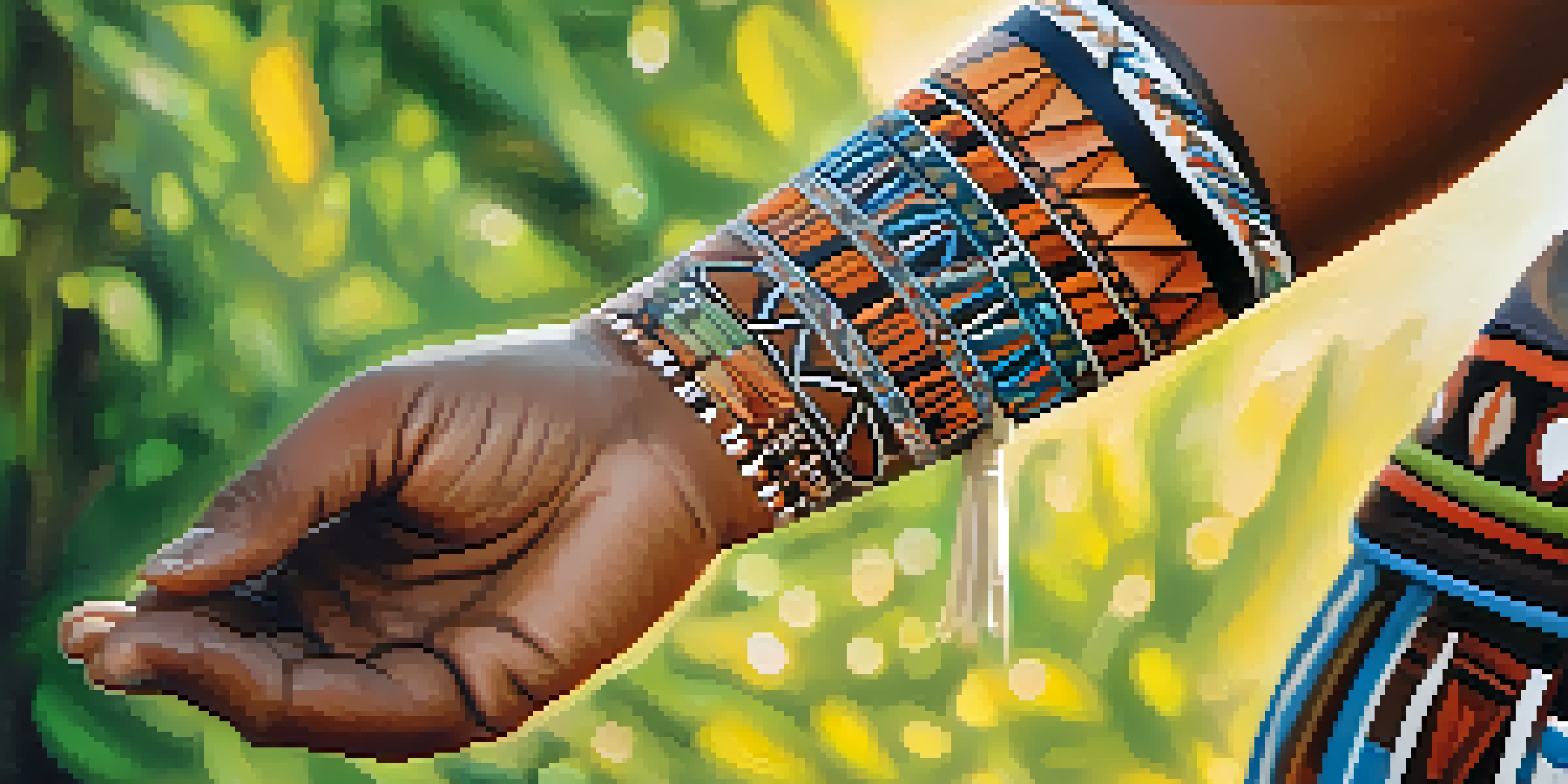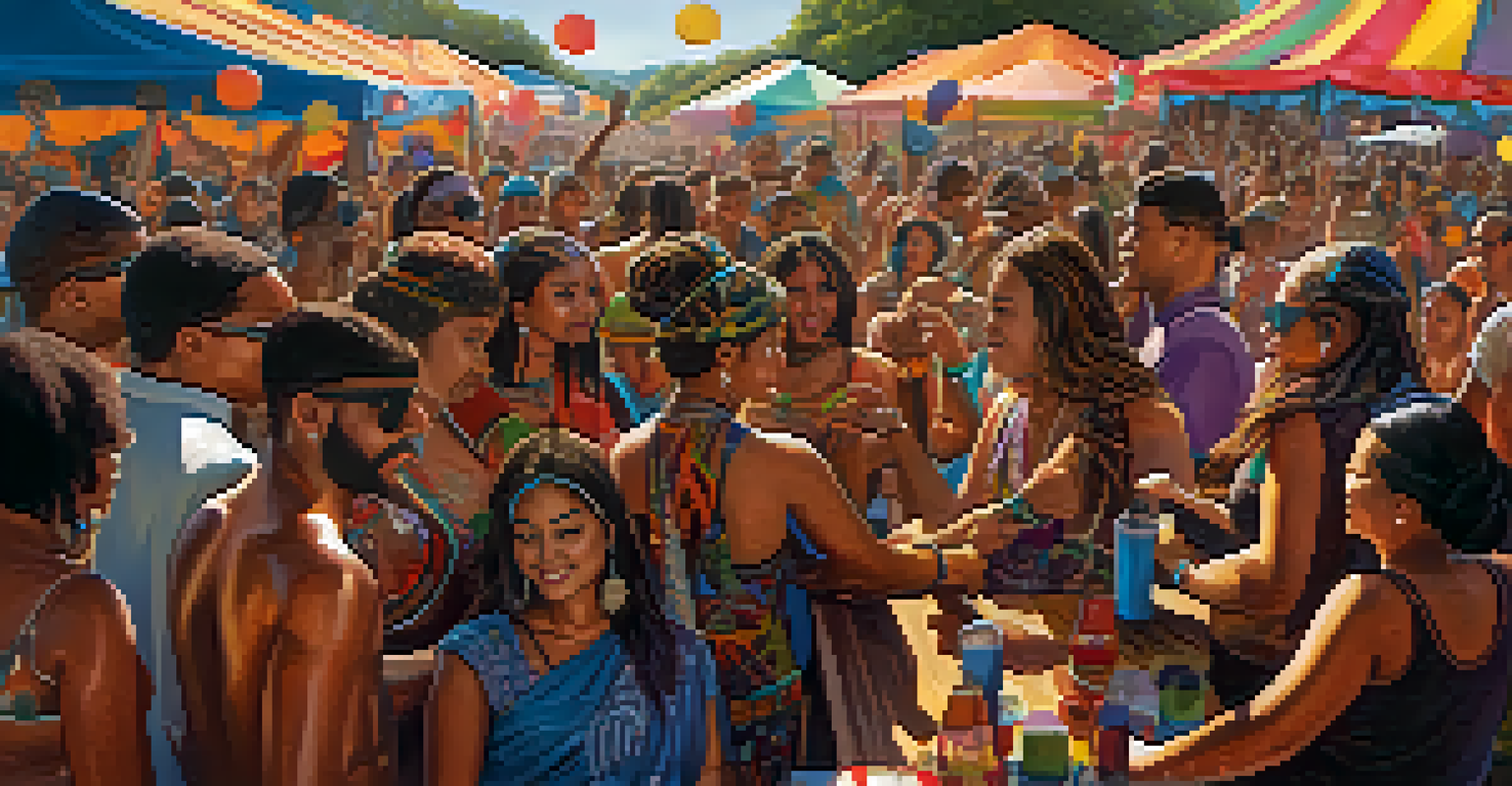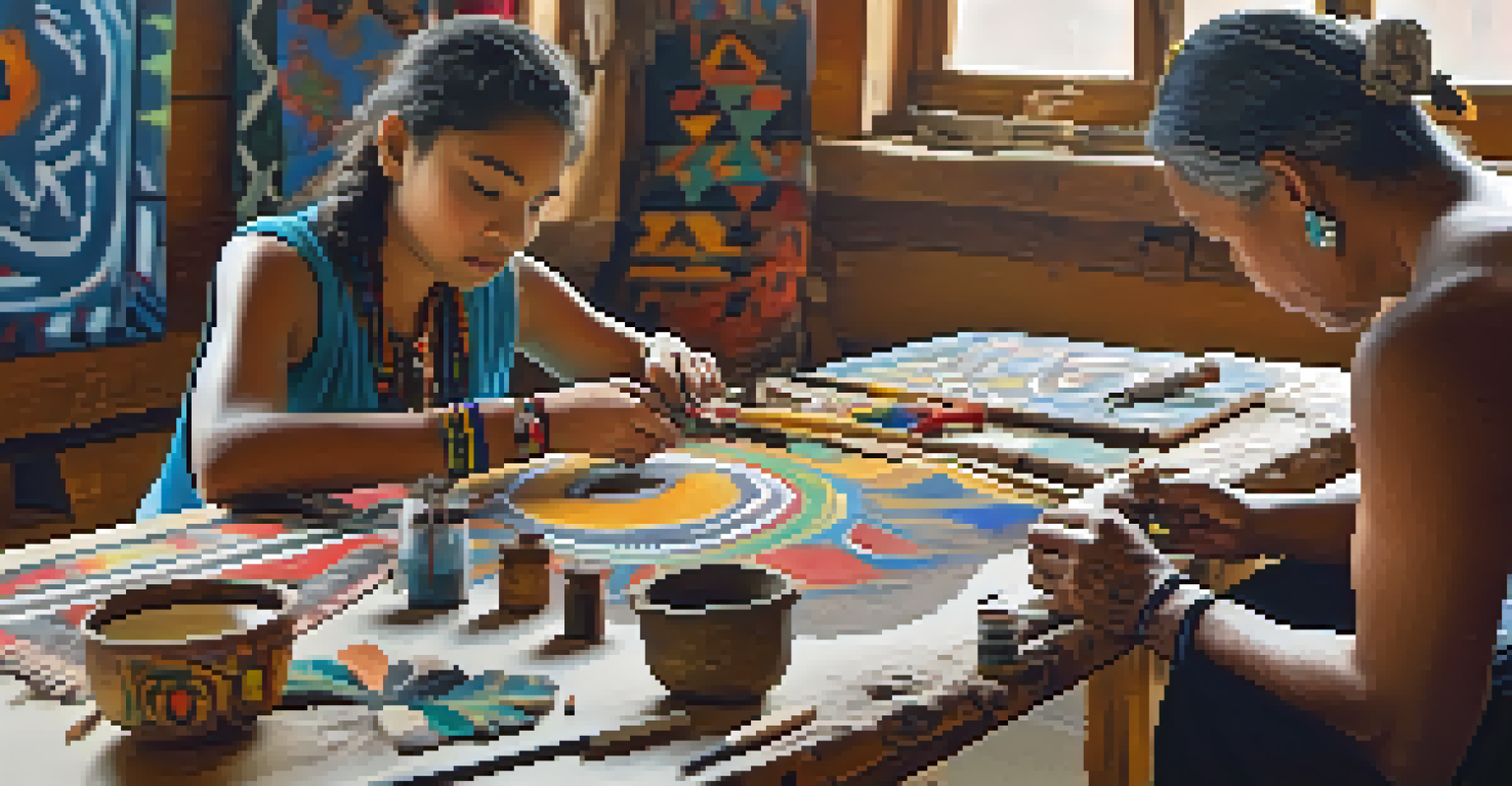Cultural Appropriation in Body Painting: An Ongoing Debate

Understanding Cultural Appropriation in Body Art
Cultural appropriation occurs when someone uses elements of a culture they do not belong to, often without understanding or respecting its significance. In body painting, this can manifest when artists adopt traditional designs from marginalized cultures for aesthetic purposes. The debate is further complicated because body art is often celebrated for its beauty and creativity, but what happens when that creativity borrows from cultures without permission?
Cultural appropriation is like a thief in the night. It takes from the culture without permission, often leaving behind a sense of loss and exploitation.
Consider, for example, a popular music festival where attendees paint their bodies with designs inspired by Indigenous tribes. While the individuals may view this as an expression of art and appreciation, those from the culture in question might see it as disrespectful and exploitative. This raises important questions about ownership and the ethics of artistic expression.
The ongoing dialogue around cultural appropriation reminds us that art is not created in a vacuum. Every piece of body art carries history and meaning, making it essential for artists to approach these elements with care and consideration. Understanding the roots of these designs can help in navigating this delicate landscape.
The Fine Line Between Appreciation and Appropriation
Appreciation involves honoring and respecting a culture, while appropriation often disregards its origins and significance. Artists who wish to incorporate cultural elements into their work must navigate this fine line to avoid offending those whose traditions they draw from. This distinction is crucial, as it can influence how the art is received by both the original culture and the wider audience.

For instance, a body painter might study the symbolism behind specific patterns before using them, demonstrating a commitment to understanding their meaning. This approach can transform their work from mere decoration into a tribute, fostering a deeper connection with the culture represented. However, without this effort, the risk of appropriation increases significantly.
Cultural Appropriation vs. Appreciation
Understanding the difference between cultural appropriation and appreciation is crucial for artists to engage respectfully with cultural elements.
Ultimately, it requires a conscious choice to engage with cultures in a way that is respectful and informed. Artists can benefit from open conversations with community members to gain insights and seek permission, which can lead to a more enriching experience for everyone involved.
The Role of Social Media in Body Painting Trends
Social media has played a significant role in popularizing body painting, making it accessible to a broader audience. Platforms like Instagram and TikTok showcase various body art styles, often blurring the lines between cultural appreciation and appropriation. With trends rapidly evolving, it can be challenging to evaluate the implications of these artistic choices in real-time.
Art is a reflection of culture, but when it borrows from another culture without understanding, it risks becoming a mere imitation rather than a celebration.
For example, a viral trend may feature intricate designs inspired by a specific culture, leading many to join in without fully grasping the cultural context. This can result in a proliferation of body art that, while visually stunning, may also contribute to the dilution of its original meanings. The speed of social media can amplify both the reach and potential pitfalls of these trends.
As creators and consumers of body art, it's vital to remain critical of what we share online. Engaging in discussions about the origins of these artistic expressions can foster a more inclusive environment, encouraging thoughtful participation rather than mindless mimicry.
Perspectives from Indigenous Artists and Communities
Indigenous artists often share unique perspectives on body painting, emphasizing the importance of cultural heritage and identity. For them, body art is not just an aesthetic choice but a vital expression of their history and beliefs. Engaging with these artists can provide a deeper understanding of the nuances surrounding cultural appropriation and the impact it has on their communities.
Many Indigenous artists advocate for the recognition of their work as a means of cultural preservation rather than appropriation. By sharing their stories and traditions, they invite others to appreciate the art form from a place of respect rather than exploitation. This approach encourages dialogue, allowing for a more profound appreciation of the art's significance.
Social Media's Dual Role in Art
Social media can amplify both the popularity of body art trends and the risks of cultural appropriation, making it essential for creators to be informed.
However, there is often frustration when non-Indigenous individuals capitalize on their designs without acknowledgment or respect. This highlights the need for greater awareness and sensitivity when incorporating cultural elements into body art, encouraging a shift towards collaboration rather than appropriation.
Legal and Ethical Considerations in Body Painting
The legal landscape surrounding cultural appropriation in body painting is still evolving, with few protections in place for cultural expressions. While copyright law can protect specific artistic works, it often falls short when it comes to traditional cultural elements that do not belong to a single creator. This gap poses challenges for both artists and communities seeking to safeguard their heritage.
Ethically, the responsibility lies with artists to educate themselves on the cultural significance of the designs they wish to use. This means going beyond surface-level understanding and delving into the history and meanings behind the body art. By doing so, artists can make informed decisions that honor the cultures they represent.
Navigating this complex legal and ethical landscape requires ongoing dialogue and collaboration among artists, communities, and legal experts. By working together, we can foster an environment that respects cultural heritage while promoting creative expression.
The Impact of Cultural Appropriation on Communities
Cultural appropriation can have significant impacts on the communities whose traditions are being borrowed. When elements of a culture are used without permission or understanding, it can lead to feelings of alienation and exploitation among community members. This disconnect highlights the importance of fostering respectful relationships between artists and the cultures they draw inspiration from.
Moreover, the commercialization of cultural symbols can dilute their meaning, transforming sacred designs into mere trends. This commodification can further marginalize the voices of those within the culture, as their heritage is often reduced to a fashion statement. The consequences of these actions can perpetuate stereotypes and reinforce power imbalances.
Collaborative Art for Mutual Respect
Respectful collaboration between artists and cultural communities can lead to art that honors traditions and fosters understanding.
To mitigate these impacts, it is crucial to engage in meaningful dialogue and acknowledgment of the communities behind these artistic expressions. Supporting Indigenous artists and creators can help uplift their voices while promoting a more inclusive approach to body art.
Finding Common Ground: Respectful Collaboration
Despite the challenges posed by cultural appropriation, there is potential for respectful collaboration between artists and communities. By working together, both parties can create art that honors cultural traditions while allowing for creative expression. This collaborative approach can pave the way for innovative body art that reflects shared values and mutual respect.
For example, a body painter might partner with a cultural leader to co-create a design that incorporates traditional elements while also reflecting modern interpretations. This partnership not only validates the cultural significance of the designs but also fosters a sense of community and understanding. Such collaborations can serve as powerful examples of how art can bridge divides.

Ultimately, the goal is to create an environment where all artists can express themselves while honoring the cultures that inspire them. By prioritizing collaboration and respect, we can move towards a future where body painting celebrates diversity rather than exploits it.